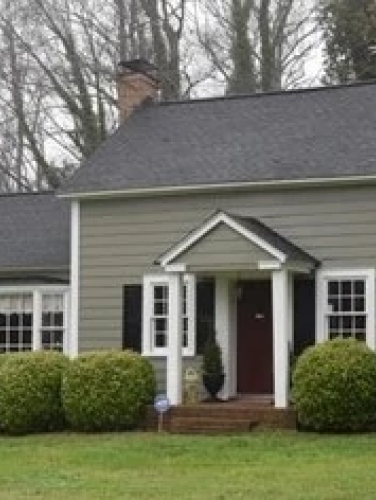
Albert Wallace Log House
(ca. 1860s)
The Albert Wallace Log House is one of the few significantly intact nineteenth century Mecklenburg County log houses still at its original site.
9425 Robinson Church Rd, Charlotte, NC 28215
The first houses constructed by the early settlers of Mecklenburg County were unpretentious and practical structures, primarily due to the limited economic resources of their inhabitants. Log buildings were especially popular as labor was scarce, and the necessary building materials (wood and clay) were plentiful and inexpensive. Once widespread across the North Carolina Piedmont in the eighteenth and nineteenth centuries, most of those log houses are now gone, especially in highly urbanized places. The Albert Wallace Log House therefore has special significance as one of the few significantly intact examples of a surviving early Mecklenburg County log house still at its original site.
Property Quick Links
In the 1850s, Albert Wallace (1817-1882) owned and resided on an approximately 750-acre plantation on Reedy Creek. The property included several structures, including a frame plantation house, gin houses, a sawmill, and a collection of farmhouses. Tradition holds that the Wallace Log House was one of those farmhouses. Wallace used enslaved labor to run his agricultural operations. According to the 1860 census, Albert Wallace owned 19 enslaved persons, including a woman named Tena Wallace. Local oral histories suggest that the Wallace Log House was likely constructed prior to the Civil War and that Tena had lived there as an enslaved person. Census records confirm that Tena did reside in the house with her husband Jerry Wallace and their seven children from at least 1880 until after 1910. Jerry and at least three of the couple’s sons worked as sharecroppers on the adjacent farmland during the family’s postbellum occupancy of the Wallace Log House. Their work focused primarily on the cultivation of cotton.
Albert Wallace’s son Matthew (1855-1896) sold this portion of his father’s former plantation in 1879. It passed through several hands until 1950, when the Davenport family purchased the property and restored and expanded the Albert Wallace Log House. The original log house comprises the portion of the current structure’s façade that includes the main entrance and the small gabled porch.

